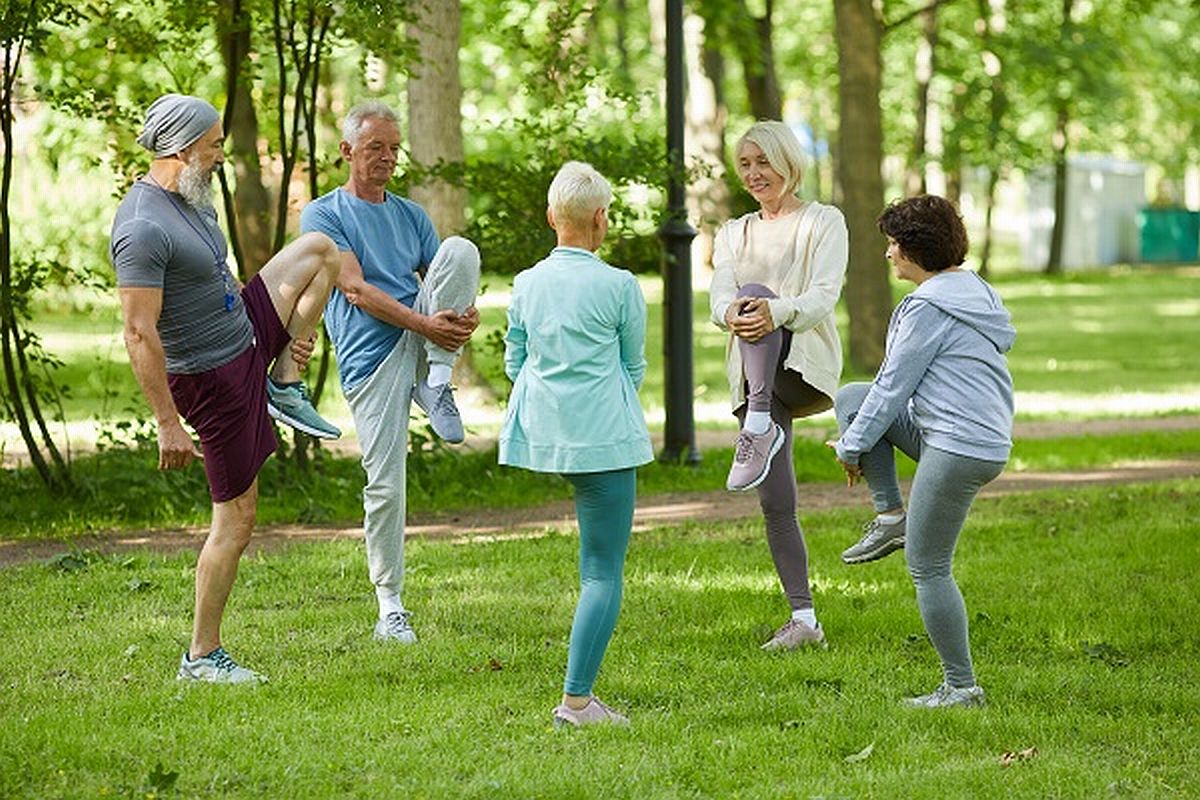Reprint By CodeBlue | 12 December 2022
Physical activity for seniors can help improve mental and physical health and help them maintain independence as they age.

KUALA LUMPUR, Dec 12 – Exercising and staying active is not always something that one relates with the elderly, as they are often perceived as not being able to participate in high-energy events or being more susceptible to injury.
However, this is far from the truth as those in their golden years should participate in regular physical activity and can even benefit from incorporating muscle strength training in their daily routines.
Regular exercise and movement is beneficial to one’s body — it not only builds up muscle strength, but also counteracts the weakness and frailty experienced by the elderly that accompanies aging.
While they may experience various orthopaedic conditions due to the reduced healing rate of the muscles, loss in muscle mass, and reduction in bone density, Sunway Medical Centre Velocity (SMCV) consultant orthopaedic and trauma surgeon Dr Ng Swee Soon shares that the recovery or common conditions among the elderly such as osteoarthritis, fractures, dislocation of joints and osteoporosis can be eased with exercise.
“Individuals with joint problems such as osteoarthritis can still exercise safely. In fact, exercising will help them to maintain their joint health and improve muscle strength. Some of the exercises that they can do includes regular walking, stretching and low impact routines such as tai chi are good options. If individuals are not comfortable to exercise alone, group exercises with friends can also be a great way to start,” said Dr Ng.
“It is never too late to start exercising. Start simple and light to prevent injuries, then increase intensity as the general condition and fitness improves. Beware of heart or lung diseases that may limit the ability to exercise. Consult your attending doctor when in doubt. Another option is to see a physiotherapist or physical trainer to formulate an exercise plan for you. In general, low impact exercise that improves stamina and increase strength are recommended,” he added.
He notes that the elderly should always listen to their body — there might be minor pain and strains following exercise in the beginning, but prolonged pain must be followed up with a doctor’s consultation in the event of any injury.
To further protect one’s health, Dr Ng highlights that there are ergonomic adjustments that can be made in homes to help the elderly maintain quality of life.
“Modifying a home to ensure that it is not a danger to their safety and health when their physical abilities change is an important factor as an individual grows older. Making sure that the floors are kept dry and have safety features such as non-slip mats, handrail in slippery areas such as the bathroom and on uneven surfaces such as the staircase are factors that can protect the elderly as they move around their home,” he said.
Listen To Your Heartbeat
Aside from strengthening one’s physical condition, exercise also strengthens one’s heart and improves circulation. Dr Foo Yoke Long, SMCV consultant cardiologist and internal medicine physician shares that the increased blood flow raises oxygen levels in the body, lowering risks of heart diseases such as high cholesterol, coronary artery disease, and heart attacks.
Regular physical activity can boost strength and endurance, leading to improvements in heart and lung health and more energy to tackle simple day to day activities.
“It is safe for most adults over 65 years old to exercise. Even most patients who have chronic illnesses can exercise safely. These include heart disease, high blood pressure, diabetes, and arthritis. Many of these conditions are improved with exercise,” he noted.
Dr Foo explains that some elderly might be hesitant to undergo physical exercise after a heart procedure, but he notes that being active can actually strengthen the heart and aid recovery.
Patients can go through cardiac rehabilitation, which is a structured programme of exercise to help recover from a heart attack or other cardiac events including heart failure, angioplasty and heart bypass surgery.
While it may vary from person to person, cardiac rehabilitation comprises four main stages – the acute phase, where a physical therapist will work closely with the health care team to help patients regain mobility in the hospital, the subacute phase, once the patient leaves the hospital, intensive outpatient therapy, and finally, independent ongoing conditioning to maintain optimal health and prevent possible cardiac problems in the future.
Dr Foo adds that seniors need not be wary of their body not responding to exercise the way it did when they were younger. “Getting back into shape looks different at every age, so try not to let yourself get too hung up on achieving the level of fitness you experienced decades ago. Instead, talk to your doctor about a sustainable form of exercise you can safely complete a few times a week.
Most importantly, make sure you are listening to your body and being aware of your own limitations. It is not uncommon for early motivation to lead to overexertion – especially if you have not exercised in a while. Look out for signs that you might have overexerted yourself such as dizziness, nausea, pain, or excess fatigue and take a break,” he said.
Ensuring One Has A Balanced Take On Wellness
“Diet, exercise, and sleep are the three pillars of a healthy life. While improving just one of these lifestyle factors can help people lead longer lives, several recent studies have suggested that improving all three pillars may be a better way to improve both physical and mental health. Learning about how these activities affect one another is an important part of understanding why research has shown that the more of these lifestyle behaviours you improve, the better your wellbeing will become,” Dr Foo concluded.
Sunway Medical Centre Velocity is located at Lingkaran SV, Sunway Velocity. For enquiries, please contact 03-97729191 or email smcv-enquiry@sunway.com.my. Click here for more information or visit SMCV’s Facebook page.

